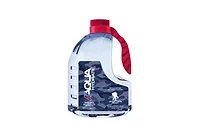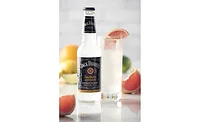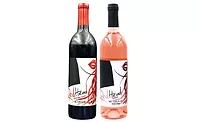RumChata capitalizes on its flavor, mixability
Cream liqueur can be crafted into a multitude of recipes

After 15 years in sales, marketing and new product development at Jim Beam, RumChata Founder and Master Blender Tom Maas took a decidedly different tactic when he developed a new brand in his kitchen in 2007. From what began as an interest in the Hispanic culture and horchata's distinct combination of rice, cinnamon and vanilla, RumChata now is the No. 1 selling rum-cream liqueur, with an annual sales of 500,000-plus cases globally, Maas says.
Maas, who also serves as founder and head of parent company, Agave Loco LLC, Vernon Hills, Ill., and business partner and package designer Peter DiDonato, officially began selling RumChata in August 2009. This year marks RumChata’s 10th anniversary in the market.
However, even with a finalized recipe and packaging design, getting RumChata to market brought some challenges, Maas notes. Maas and DiDonato needed to figure out one important aspect — where was RumChata going to be produced?
To help him decide, Maas recalls a conversation with his father, a retired distilling engineer. “After reviewing all the existing bottling facilities around the country, he was of opinion [that] we could not rely on them for the quality control we would need for a cream-based product,” he says. “As a result, we decided to put up our own bottling plant.”
From there, Maas’ father, Duane, founded Midwest Custom Bottling LLC, Pewaukee, Wis., in 2008.
Yet, there was one last obstacle to overcome. “Our biggest hurdles came in financing the project,” Maas explains. “As we became more popular and production expenses ramped up, we were denied financing from the banking industry because 2009-10 was the midst of the mortgage crisis.”
As a result, much of the startup growth was financed with credit cards, he notes.
Flavor and mixability
From the beginning, RumChata always was about its unique flavor profile and the company’s original product positioning reflected that. “The tremendous flavor and mixability of RumChata is what has made it so popular,” Maas says. “All the marketing was centered on getting people to taste it and experiment with it, [but] if it were not for the basic flavor, it would not have taken off so fast. We have a saying at the company — ‘When we get people to try RumChata, they will buy RumChata.’”
What makes the cream liqueur so unique is that it doesn’t fall into a specific categorization, Maas explains. “RumChata’s flavor comes from the building blocks of baking; cream, sugar, cinnamon and vanilla,” he says. “All the best baked goods come from that flavor palette. Accentuate [those] flavors with smooth Caribbean rum and you have RumChata. The success we have had is because of the totally unique flavor experience.”
Many consumers have recognized RumChata’s distinctive flavor palette and have used it in a multitude of recipes including cocktails, shots and desserts. The brand’s website contains a recipe section that demonstrates the liqueur’s versatility in four FrappaChata recipes, 69 cocktails, 23 martinis, 13 hot drinks, 39 shots, 25 foods and three cakes.
“Based on experience, we knew how important mixability was to the popularity and growth of a spirit brand, so we certainly started out with our own cocktail and baking recipes right away,” Maas says. “However, word-of-mouth and social media exploded and instantly began spreading the word about the compatibility of RumChata with so many flavors and ingredients both behind the bar and in the kitchen.”
“We found through social media that our loyal consumers so loved RumChata that they wanted to know every way they could add it to food and beverages to further their enjoyment,” he continues. “From this, we started a YouTube channel that now has more than 200 videos featuring food and drink recipes with a base of RumChata.”
A worthy cause
Also part of the brand’s identify is its philanthropic commitments. The RumChata Foundation was formed in 2013 to share some of the good fortune created by the success of the brand, Maas says. Its mission is to provide financial support to worthy causes that share the same grassroots appeal that has made the RumChata brand a product that consumers can trust and depend on, he adds.
The foundation raised $1.5 million in charitable donations in 2018.
In its sixth year, the annual RumChata Freedom Bottle program, in partnership with the Lone Survivor Foundation (LSF), focuses its efforts on veteran aid. “We are always looking at worthy causes to support, but by focusing most of our efforts on veterans through Lone Survivor, we have been able to really have an impact,” Maas says. “Our RumChata Freedom Bottle program is projected to reach more than $850,000 in total donations to Lone Survivor Foundation with this year’s donation.”
The annual Freedom Bottle program runs from Memorial Day through the Fourth of July, with limited-edition Lone Survivor Foundation RumChata bottles on shelves and floor displays. Proceeds from all bottles sold benefit and support LSF. “The funds raised have helped service members and their families to find the tools to help deal with the consequences of PTDS, MTBI, MST, chronic pain and the accompanying emotional and mental stresses of the silent wounds of their combat service,” Maas says. BI
Looking for a reprint of this article?
From high-res PDFs to custom plaques, order your copy today!






